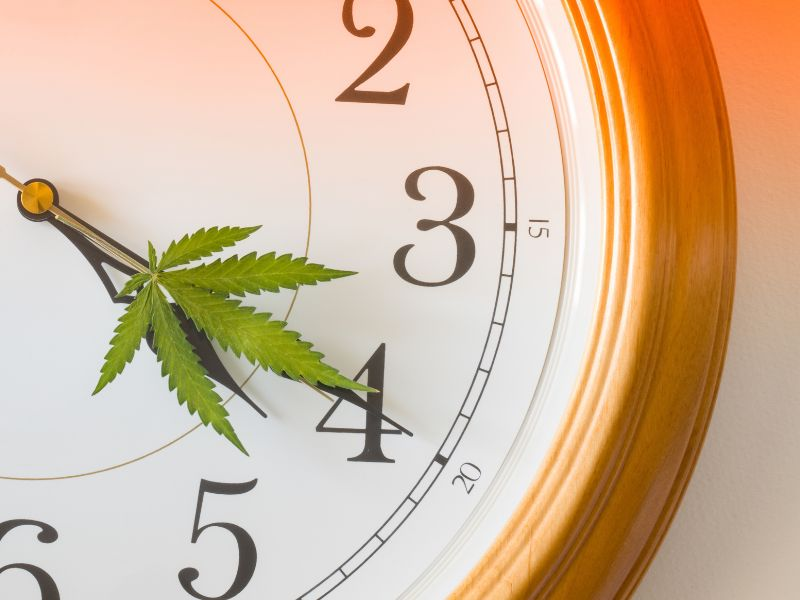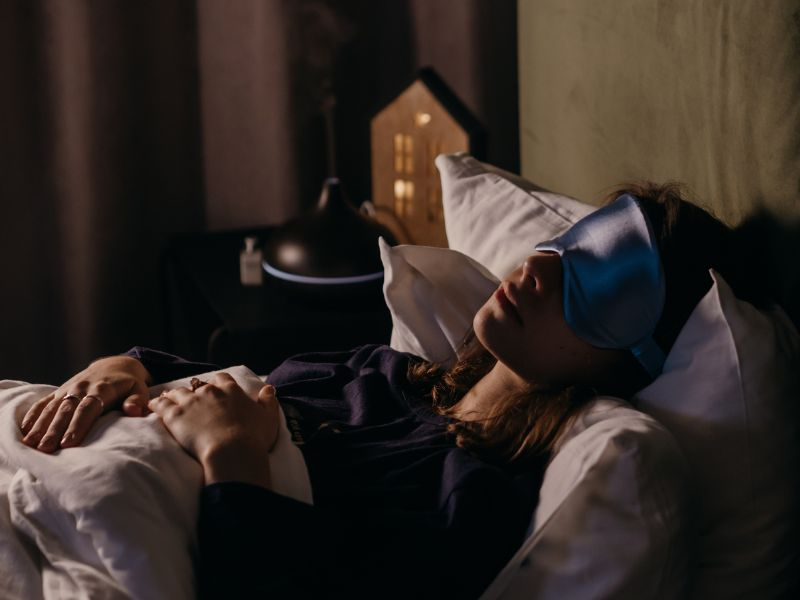Introduction to Navigating Sleep and Cannabis

Daylight Saving Time (DST) introduces notable disruptions to our sleep patterns, primarily due to the sudden shift in our internal clocks that doesn’t immediately align with the external environment’s new time cues. This misalignment can lead to trouble falling asleep, staying asleep, and even affect the quality of sleep, leaving many feeling tired and unrefreshed upon waking.
As individuals grapple with these adjustments, cannabis emerges as a potential ally in mitigating these sleep problems. Its properties, particularly those found in cannabinoids like THC and CBD, have been shown to influence sleep mechanisms in a way that can aid in the adaptation to the time change. By potentially enhancing sleep quality and duration, cannabis can play a supportive role in sleep hygiene practices, helping the body to adjust more seamlessly to the effects of DST. This introduces an intriguing avenue for those looking to minimize the impact of the time transition on their sleep patterns and overall well-being.
Cannabis and Its Effects on Sleep

Cannabis exerts its effects on sleep through its interaction with the body’s endocannabinoid system, a complex network of receptors that play a key role in regulating sleep, mood, appetite, and other functions. THC (tetrahydrocannabinol) and CBD (cannabidiol) are the most well-known cannabinoids, each affecting sleep differently. THC is known for its sedative effects, which can help users fall asleep faster, while CBD is praised for its ability to reduce anxiety and promote relaxation, indirectly supporting better sleep quality.
However, the impact of cannabis on sleep is not one-size-fits-all; different strains and products can significantly influence sleep quality and duration, depending on their cannabinoid and terpene profiles. Indica strains, for example, are typically associated with relaxation and might be more beneficial for sleep than sativa strains, which are often more energizing.
As Daylight Saving Time approaches, preparing your cannabis consumption becomes crucial for a smoother transition. Adjusting the timing and dosage of cannabis use can help facilitate an easier adaptation to the new schedule. It may be beneficial to gradually shift your cannabis use in the days leading up to the time change, mimicking the adjustment you want your body to make. For those looking to use cannabis to aid sleep during this time, selecting strains high in myrcene or linalool, terpenes known for their sedative properties, or products specifically designed for relaxation and improved sleep can make a significant difference. Additionally, consider the method of consumption, as the effects of inhalation versus edibles on onset and duration might influence your sleep cycle differently. By thoughtfully adjusting your cannabis consumption, you can harness its potential to mitigate the disruptive effects of Daylight Saving Time on sleep, ensuring a smoother transition and more restful nights.
Sleep Hygiene Practices to Enhance Cannabis Efficacy

Implementing good sleep hygiene practices can significantly enhance the efficacy of cannabis in promoting restful sleep, especially during adjustments like Daylight Saving Time. Establishing a bedtime routine is paramount in signaling to your body that it’s time to wind down and prepare for sleep. This routine can include dimming lights, reducing screen time, and engaging in calming activities like a warm bath, all of which cue the brain to release melatonin, the sleep hormone.
Equally important is creating a sleep-conducive environment: investing in comfortable bedding, ensuring the room is at an optimal temperature, and minimizing light and noise exposure can profoundly improve sleep quality. These physical conditions work in tandem with the physiological effects of cannabis, optimizing its potential to facilitate sleep.
Furthermore, incorporating relaxation techniques such as meditation, deep breathing exercises, or light yoga before bedtime can enhance relaxation and stress reduction, making it easier to fall and stay asleep. These practices not only complement the sleep-inducing effects of cannabis but also support the body’s natural sleep mechanisms, fostering a holistic approach to improving sleep quality and adapting to time changes.
Addressing Potential Challenges

Adjusting to Daylight Saving Time (DST) can present unique challenges for cannabis users, including the timing of consumption and the potential for over-reliance on cannabis for sleep. Misjudging the timing can lead to difficulties falling asleep or waking up feeling less rested, while depending too heavily on cannabis might mask underlying issues affecting sleep quality. To navigate these challenges, it’s essential to practice moderation and explore alternative non-cannabis methods for sleep support. Techniques such as maintaining a consistent sleep schedule, reducing caffeine intake and screen time before bed, and engaging in relaxing activities can complement cannabis use and promote natural sleep cycles.
It’s also crucial for individuals to remember the importance of adhering to local cannabis laws and regulations. This includes being aware of the legal status of cannabis in their area, age restrictions, and the legal limits for possession and use. Additionally, safety tips for responsible cannabis consumption are paramount, especially in relation to sleep. Users should be mindful of the dosage and the timing of consumption to avoid adverse effects on their sleep-wake cycle. Ensuring that cannabis use does not impair their ability to perform daily tasks, particularly those that require focus and coordination, is also essential for maintaining safety and well-being.
Conclusion
In conclusion, navigating the sleep challenges posed by Daylight Saving Time (DST) can be effectively supported by leveraging the potential of cannabis alongside holistic sleep hygiene practices. By adjusting cannabis consumption, establishing bedtime routines, and incorporating relaxation techniques, individuals can optimize their sleep quality and ease the transition into DST. However, it’s crucial for readers to listen to their bodies and seek guidance from healthcare professionals when incorporating cannabis into their sleep routines, ensuring safe and effective use.
Ultimately, prioritizing sleep is paramount for overall well-being, particularly during the time changes associated with DST. By recognizing the importance of sleep and implementing mindful strategies, individuals can cultivate healthier sleep habits and thrive amidst the adjustments brought about by Daylight Saving Time.



